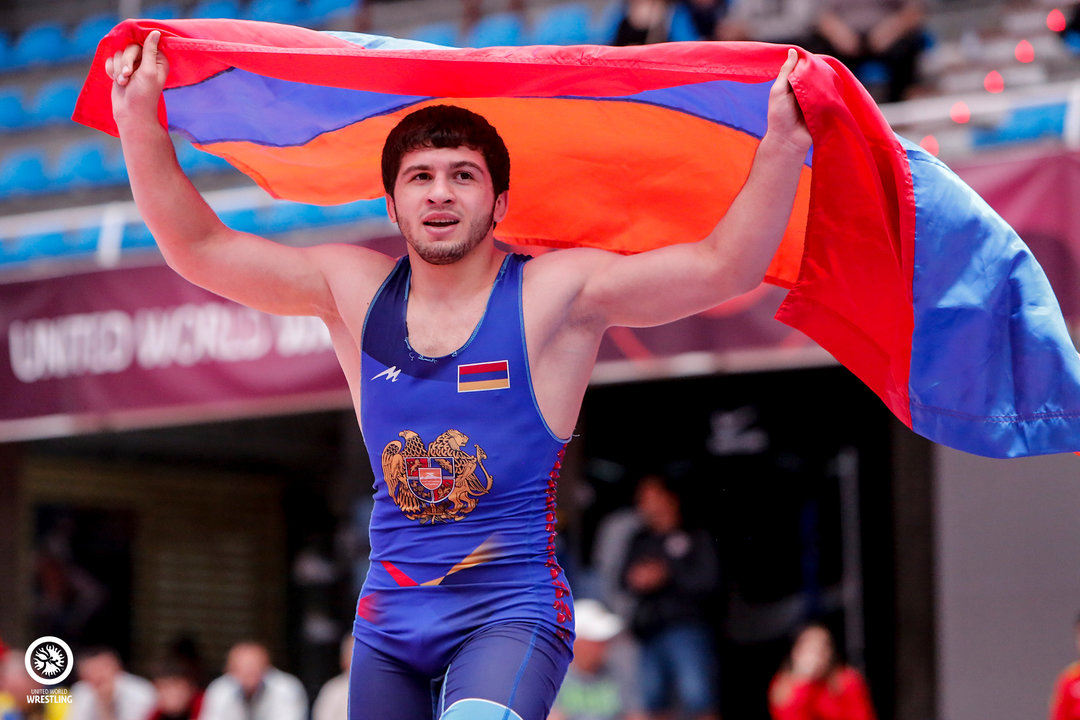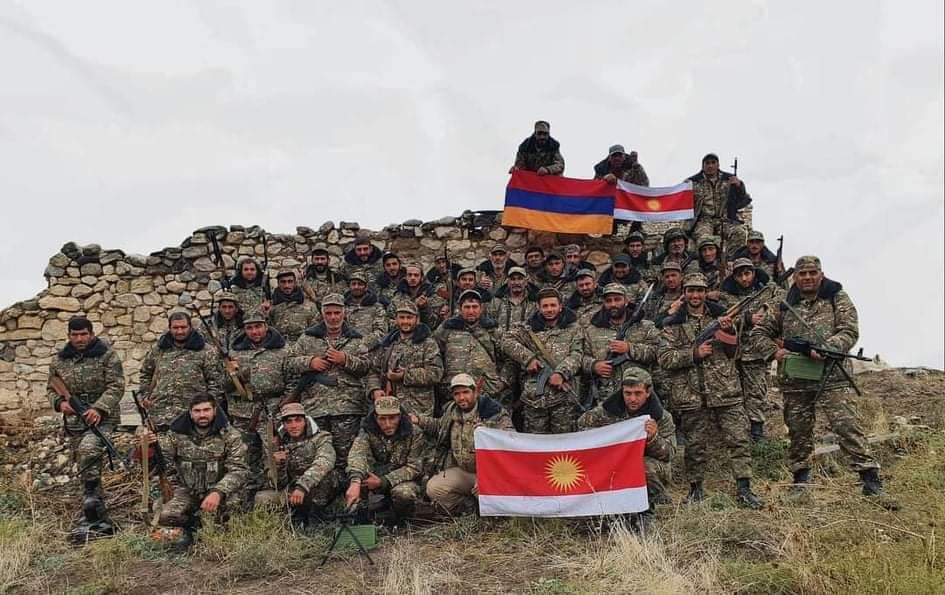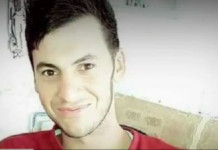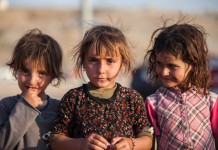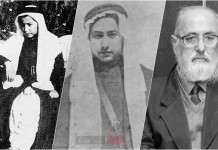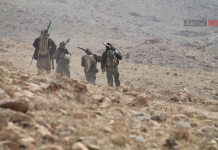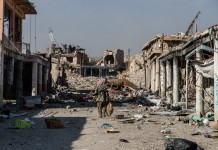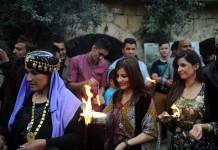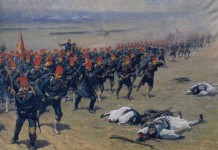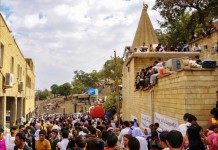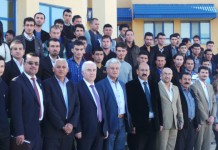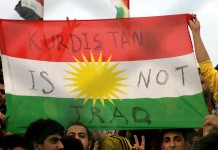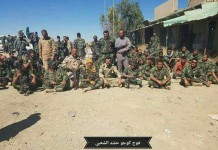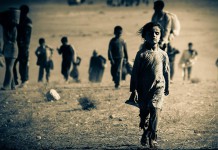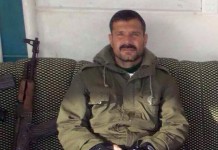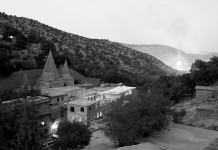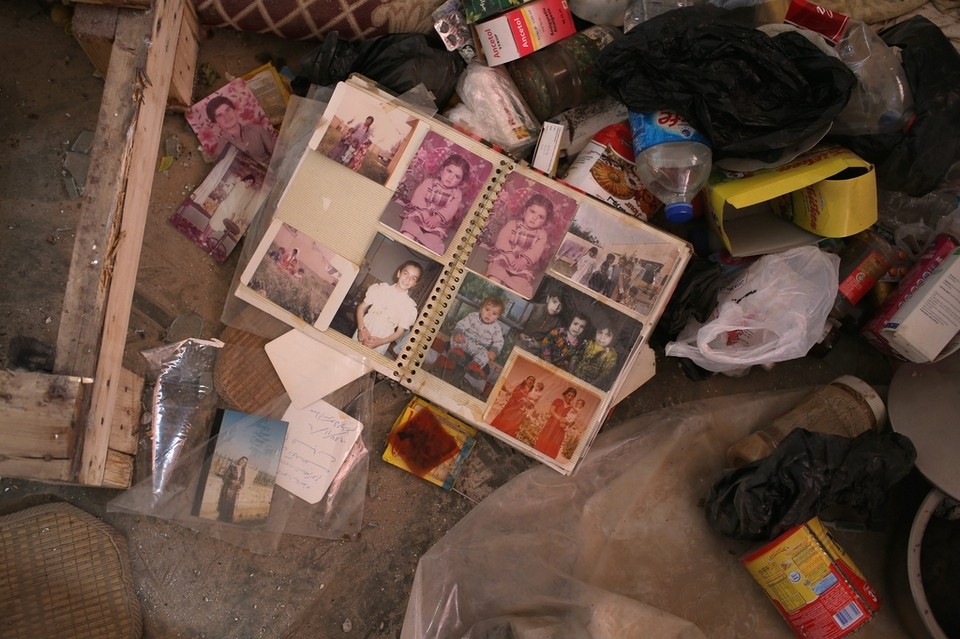
Lalish. Two years ago, henchmen of the Islamic State (IS) overran the north of Iraq, capturing the metropolis of Mosul within a short period of time. Since then, the militia has not only been terrorizing Iraq and Syria. Its terror is global and has already found its way to Europe – a terror which the Ezidi community has had to endure for centuries.
Only a few weeks after Mosul had fallen to the terrorist group, the IS jihadists perpetrated an unimaginable but predictable genocide which had been announced before against the civilian Ezidi population of Shingal. Rarely has a genocide been so obvious given its intent to destroy. In its magazine called “Dabiq”, IS claimed responsibility for any of its atrocities and even accused the Ezidis´ Muslim neighbors of not having exterminated them a long time ago. A genocide that has not yet reached an end, uprooted the Ezidi community and plunged it into a deep crisis. We summarize the events and their consequences:
→ 450,000 refugees – every second Ezidi is on the run
→ 5,000+ have been killed (UN figure)
→ 7,000 have been abducted (UN figure)
→ up to 3,800 women and children are still in captivity
→ up to 8,000 children have become orphans and half-orphans
→ over 30 mass graves have been discovered so far
→ several villages remain under IS control
Genocide
“Genocide has occurred and is ongoing”, Paulo Pinheiro, chairman of the UN commission of inquiry.
In the night of 2 to 3 August 2014, when the first attacks began to take shape in the south of Shingal region, the Peshmerga (mostly KDP militias) who had been supposedly deployed in the region for the security of Ezidis already started to flee. Shingal is the major settlement area of the Ezidi people where around 500,000 of 900,000 Ezidis from all over the world used to live.
The 11,000 Peshmerga who had been deployed in and around Shingal fled in the night and the early morning hours without warning the civilian population or at least providing escape routes. The IS stormed one village after another, Sunni neighbors of the Ezidis supported the terrorists´ offensive. Ezidi volunteers defended their villages for hours. After running out of ammunition, people tried to escape to the mountain where they were besieged by IS terrorists at temperatures of 40 ° Celsius. Up to 60,000 Ezidis tried to hold out there for days, many died as the result of the lack of food and water.
According to the United Nations, at least 5,000 Ezidis were murdered in the towns and villages and up to 7,000 women and children, including many underage girls, were abducted, enslaved and subsequently raped systematically. The captured men and women were asked to convert to Islam, for example in Kojo where IS henchmen murdered around 600 men and abducted up to 1,000 women and children after they had refused to convert. According to a number of estimates, 1,000 Ezidi boys are militarily being trained in camps to become future suicide bombers and IS fighters.
The UN Human Rights Council, the European Parliament, the Parliamentary Assembly of the Council of Europe, the US government and the British Parliament have recognized the genocide given its criteria. The UN Security Council, however, has not yet taken any measures. Ezidis call for the establishment of a tribunal to prosecute the IS terrorists before the International Criminal Court for commiting crimes against humanity and war crimes.
Mass graves
Over 30 mass graves cotaining the remains of men, women but also children have been so far discovered in the liberated areas of Shingal. The UN have, despite appeals from the Ezidi community, not provided any experts for preserving evidence or documenting the mass graves for future proceedings against IS terrorists. Forensic scientists of the Kurdish government are trying their best but lack the necessary equipment. One of the mass graves, which was discovered in the south of the region, contained the remains of 80 women. Up to 120 additional remains were discovered in another one near Shingal city. The graves are, however, often examined by fighters, journalists or Ezidis looking for their relatives, which makes it difficult to preserve evidence in the future.
Enslavement
“She’s a 12-year-old. Hweida didn’t know what rape was, but she would wake up with blood between her legs.”, NBC Report.
Up to 7,000 Ezidis, most of whom are women and children, were abducted. In its magazine Dabiq, the IS referred to their abduction as the reintroduction of the “Islamic tradition of slavery”. The abducted Ezidis were taken to other parts of Iraq and Syria. 3,200 women and children have been liberated or managed to escape. They reported mass rape, torture and murder in IS prisons. Children born in IS captivity were handed over to Muslim families. The abducted Ezidi women and childern are offered for sale by IS terrorists through social networks or in the open street. The IS uses the systematic rape as a psychological weapon against the whole Ezidi community.
3,500 other Ezidis still remain, for two years now, in IS captivity. The genocide continues with their captivity and does not allow the Ezidis to come to rest. There have been no concrete measures for their liberation such as special operations by the military. Ezidi families pay five-digit sums to ransom their relatives, should the option be available. The IS has tightened the security measures after a number of escape attempts succeeded, which is why fewer and fewer women and children can be ransomed or are able to escape. Many of the enslaved women and children are believed to be in IS´s strongholds of Mosul and Raqqa.
But even after their liberation, their ordeal does not come to an end. Heavily traumatized, many of them have to endure in the refugee camps without having access to proffessional assistance. Nothing has shaken the Ezidi community to its foundations, as the abductions and rapes. Most have also lost their relatives in the massacres in Shingal.
Orphans
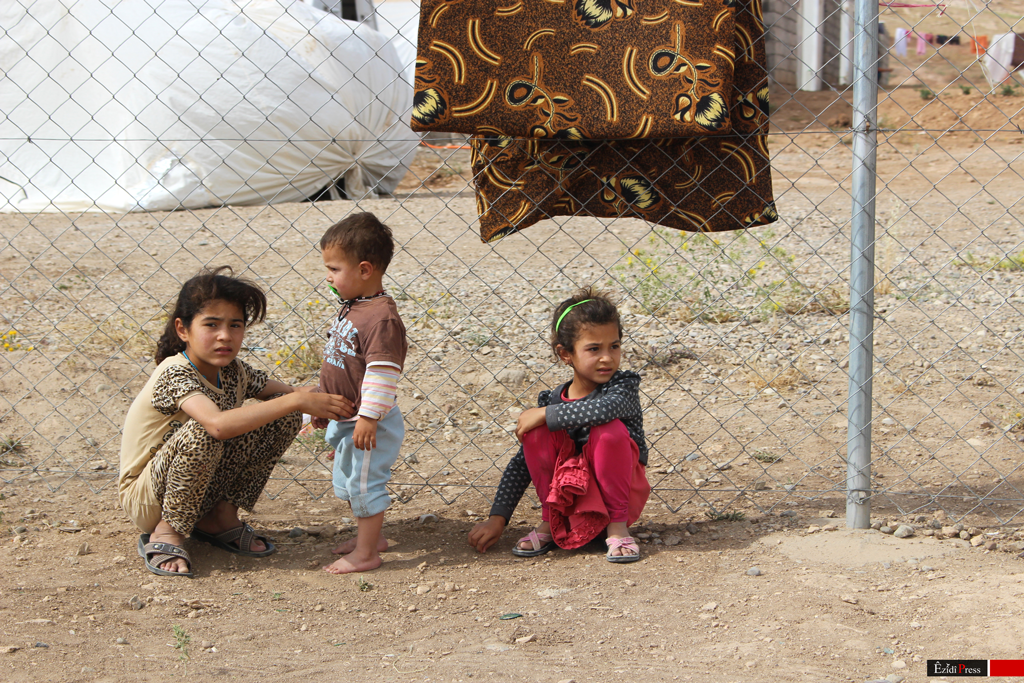
The destruction campaign of IS has turned thousands of children into orphans and half-orphans, many of whom have witnessed how their mothers and/or fathers were killed by IS terrorists in front of their eyes. There are 3,000 orphans, according to official figures. Unofficial estimates, however, indicate there are 8,000 children and youths who have become orphans and half-orphans. Those often find accomodation with their relatives who, however, also lack everything. Ezidis therefore seek to build orphanages.
Mass exodus
“This land is our grave”, Ezidi refugee.
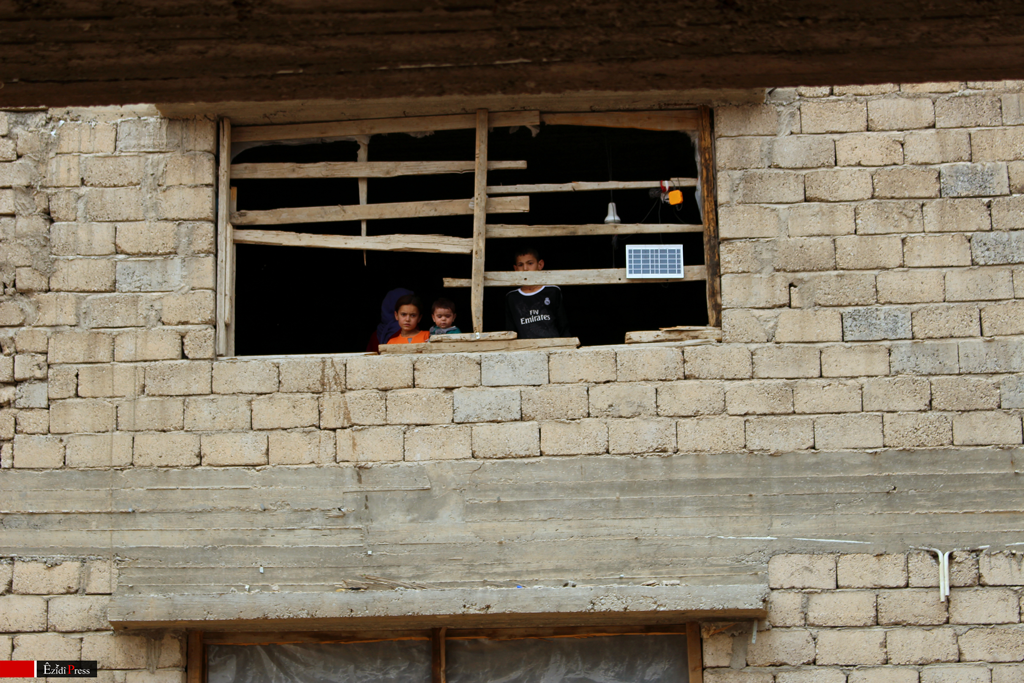
The perfidious plan of IS to destroy the Ezidi community has apparently proven to be successful. Around 100,000 Ezidis have already left Iraq / the Autonomous Kurdistan Region – that is about 20 % of the total Ezidi population. Through Turkey and the Mediterranean, many are trying to reach the safe haven of Europe. An estimated number of 30,000 Ezidis have already applied for asylum in Germany alone – with an increasing tendency. The 900,000 Ezidis already live on four continents in over 20 countries.
Destruction and political power struggle

The traditional home of the Ezidis has become a place for political power struggle. Dozens of political parties and military forces are trying to exert their influence on the power vacuum that has been left there. Party and military flags are hoisted above the ruins of destroyed buildings. The region is de facto divided into two zones: PKK-affiliated groups such as the Ezidi YBŞ control the west of the region. They are in a power struggle with the KDP, its Peshmerga and Ezidi allies who control the region´s east.
Around 85 % of the region´s infrastructure, villages and towns have been destroyed. The Iraqi Council of Representatives declared the region a disaster area. According to the evaluations provided by the authorities, 150 million euros will be needed for the reconstruction of the area. The return of the refugees seems therefore impossible – also due to the security situation.
Occupied villages
Dozens of villages in the south of the region, such as Kojo, remain under IS control. There are different opinions on why the region has still not been liberated.
Existence-threatening crisis

The genocide, the betrayal of the Peshmerga as well as the political power struggle over the region have uprooted the Ezidi community and plunged it into a deep, existence-threatening crisis. Political fronts that have been smoldering for decades have hardened, the tone between individual groups has become sharper. Mutual accusations and condemnations threaten to divide the community for further decades. The Religious Council of the Ezidis seems paralyzed in light of the challenges and political pressure.
Political parties are trying to enforce their agenda through and with the Ezidis. Especially the older generation does not seem to understand that this crisis can actually lead to the downfall of the Ezidi community and thus of an ancient heritage of Mesopotamian culture.
Once again, heroes from the very beginning turned out to be loyal party members – which is one of the reasons that enabled this crisis in the first place. It is therefore young activists such as Nadia Murad who give Ezidis new hope and take responsibility for their community.
© ÊzîdîPress, July 31, 2016

